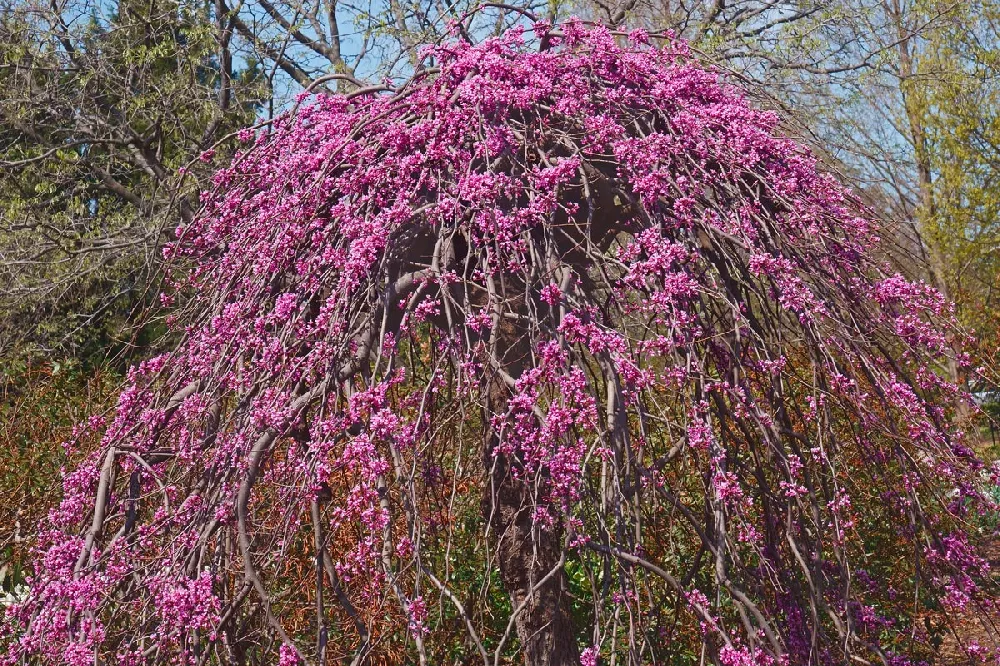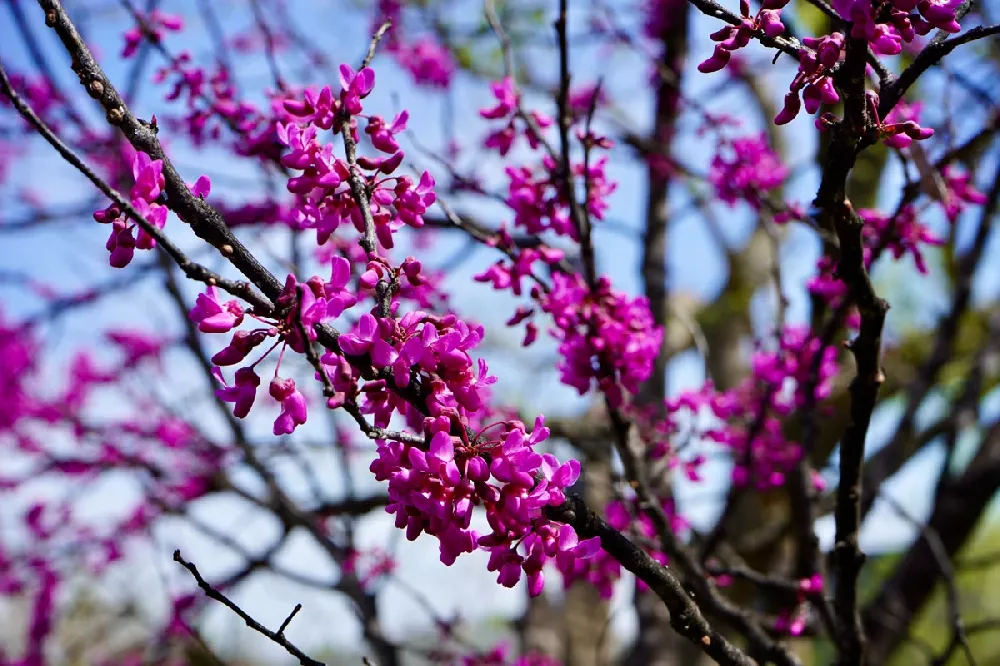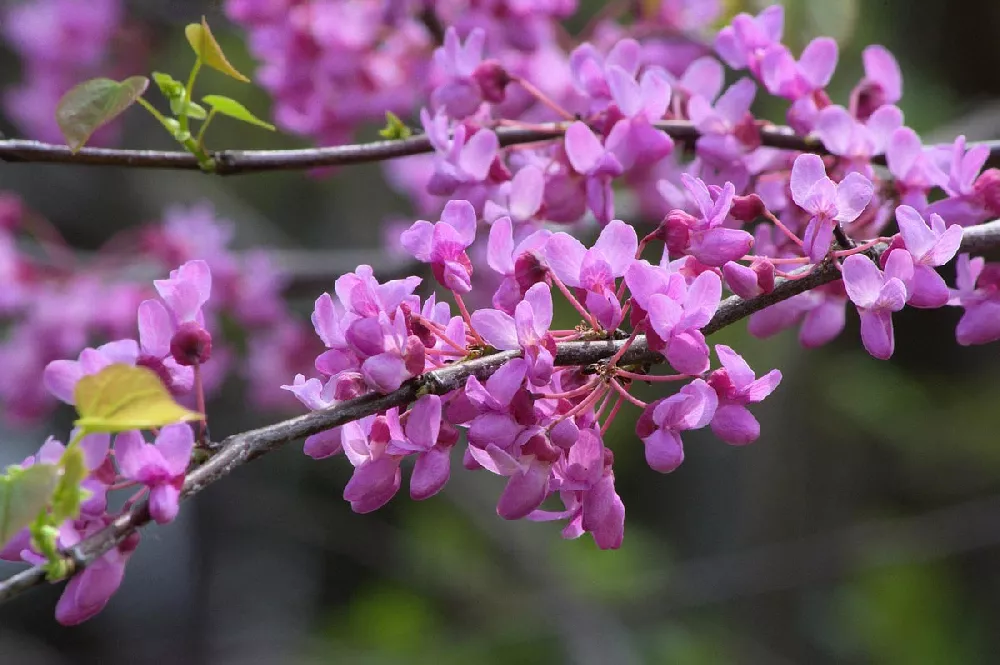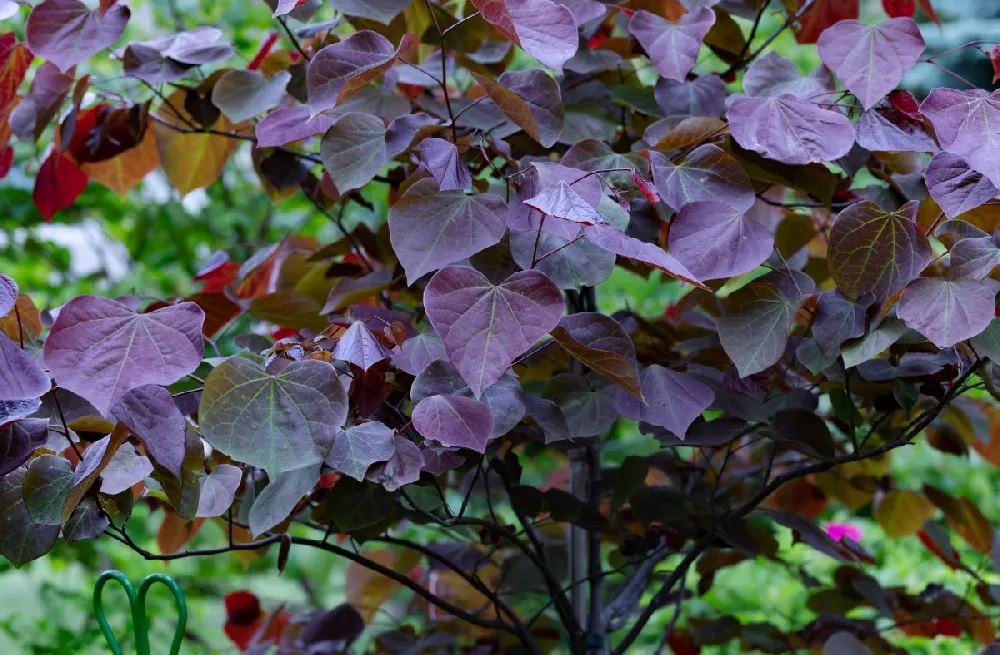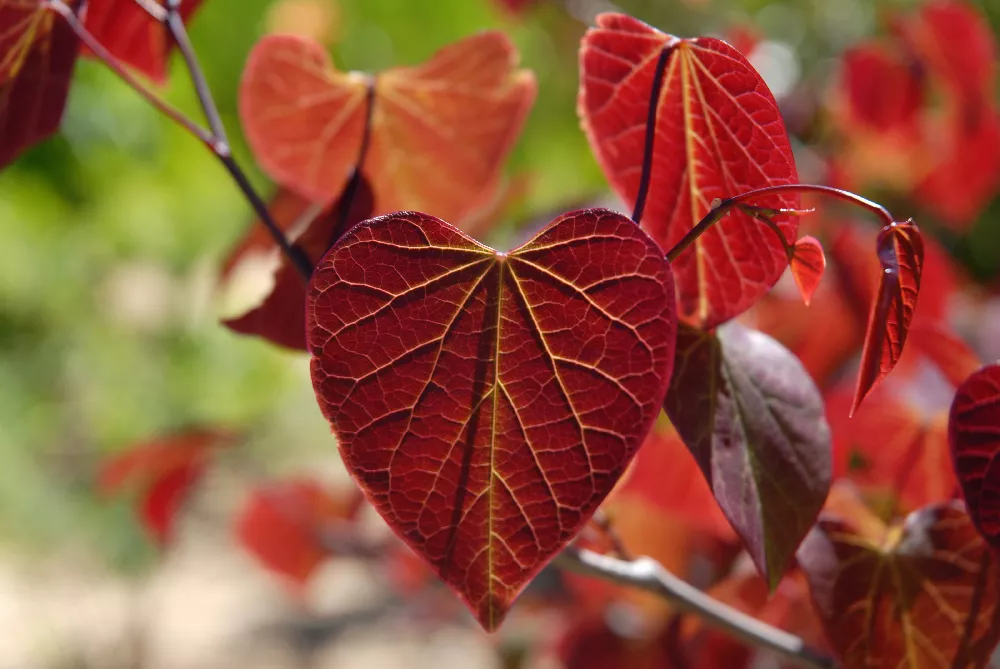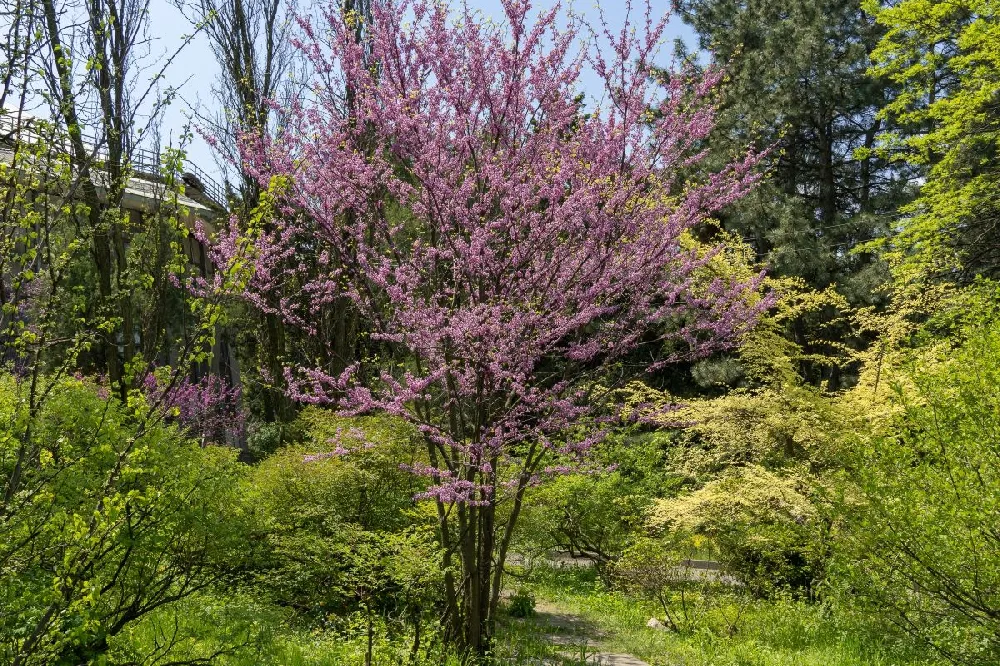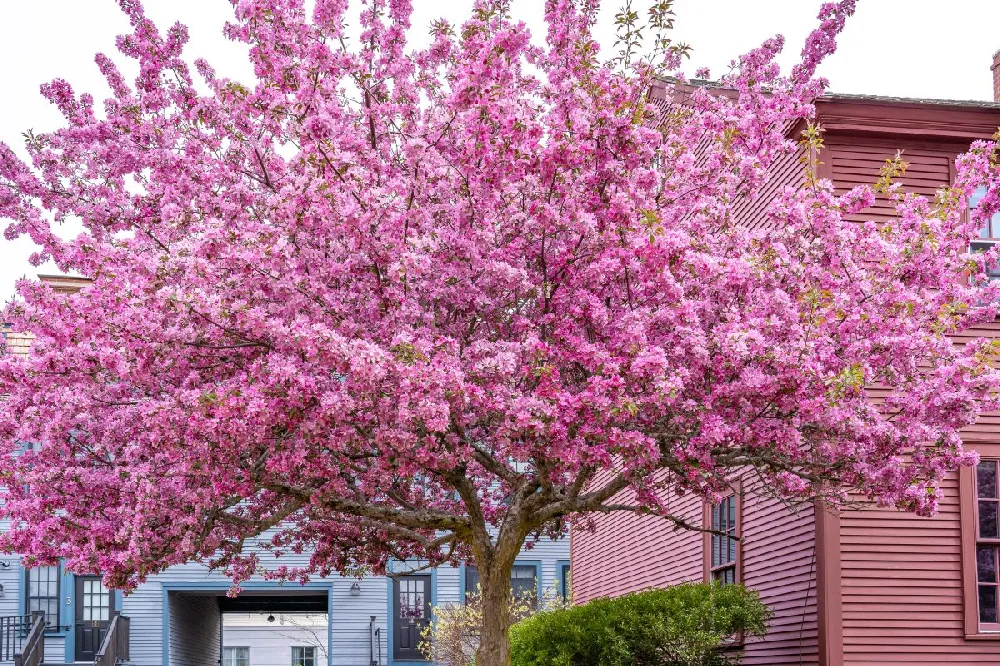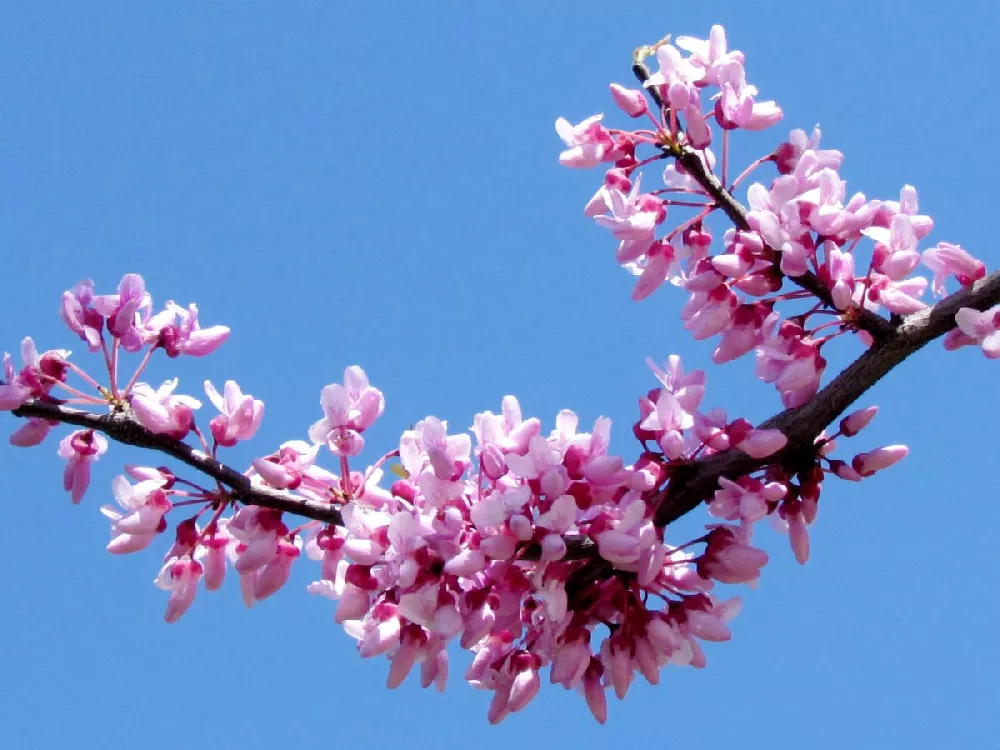- Home >
- Redbud Trees >
- Lavender Twist Weeping Redbud Tree
Lavender Twist Weeping Redbud Tree for Sale - Buying & Growing Guide
- Ships in 1-2 days
- 1-Year Warranty Eligible
- Pots or accessories are not included unless specified in the product options.
Shipping Details:
Once your order is shipped, you’ll receive an email with a tracking number and estimated delivery date. Most orders ship immediately, but some items are seasonal and may only ship in spring or fall. These products are noted on the website.
Redbud trees come in many different cultivated varieties, and each one offers unique ornamental features that make them stand out. In the case of the lavender twist weeping redbud tree, or Cercis canadensis 'Covey,' the main point of attraction is the weeping form this tree creates. That form adds intrigue on its own but also creates a captivating cascading effect when the early-spring flowers arrive. The lavender twist weeping redbud tree also maintains a small size throughout its life, making it easy to manage.
- The lavender twist weeping redbud tree’s weeping growth habit creates an umbrella-like shape.
- Its growth habit allows for a cascading effect when flowers bloom.
- It typically remains smaller than most other redbud varieties.
Plant Care
Sunlight

This redbud tree can grow in both full sunlight and partial shade.
Watering
Established trees need water once a week or less.
Fertilizing

Fertilize once in the early spring with a general-purpose fertilizer.
Planting and Care
Planting instructions
Most redbud trees, including the lavender twist weeping redbud, will grow well where the soil is slightly acidic and contains plenty of organic nutrients. These trees will also grow in either full sunlight, with six hours or more of sun exposure, or in partial shade, with about three to six hours of sunlight. The lavender twist weeping redbud tree is a small cultivar, meaning that you won’t need to worry too much about spacing when planting it.
Watering and nutrients
Established lavender twist weeping redbud trees have admirable drought tolerance, but they will perform best when they receive water about once per week during the growing season. For newly planted trees, you should water often enough to keep the soil consistently moist at all times. Regarding fertilization, this plant will appreciate an annual feeding in the early spring. When fertilizing, use a balanced fertilizer or an organic material such as compost to improve the soil quality. Soil amendments that lower soil acidity can also be beneficial if you notice the pH is getting too high.
Pollination
The lavender twist weeping redbud tree blooms in April with vibrant purple flowers. These flowers are bisexual, meaning that they have both male and female structures, allowing for self-pollination, and they attract many insects via their nectar. The early arrival of these flowers makes them incredibly valuable to native pollinator species, as there are few other trees that can offer so much nectar so early in the growing season. Redbuds are especially beneficial to several important types of bees, including honey bees.
Pruning
When pruning a lavender twist weeping redbud tree, you should wait until the bloom period has ended. Once that occurs, you should use a set of sharp and sterile pruning tools to remove any branches that are dead or diseased. Lavender twist weeping redbud trees often don’t need much shaping, as they have been cultivated to produce a specific weeping form. However, the canopy of these trees can become quite dense. As such, thinning the canopy is a good idea: It can reduce the odds of moisture-related diseases.
Pests, diseases, and animals
Nearly all redbud varieties are vulnerable to canker, and the lavender twist weeping redbud tree is no exception. When canker occurs, the stems of your lavender twist weeping redbud tree will die, which can have a significant effect on the tree’s overall health. Other issues, including leaf spots and verticillium wilt, can arise in this tree. Insect infestations are also possible, with leafhoppers, scale insects, caterpillars, and others being the most common bugs to cause issues for this tree species.
Achieving maximum results
As is true for many spring-blooming trees, the lavender twist weeping redbud tree should not receive pruning cuts in the early spring. Pruning too early can remove the season’s buds and greatly diminish the impressive floral effect this plant has. You should also be somewhat wary of overwatering this plant. Overwatering a redbud tree will often make it more vulnerable to diseases like canker. Bark damage and a lack of fertilization can lead to similar negative results in some cases as well.
FAQs
How large does a lavender twist weeping redbud tree grow?
Is the lavender twist weeping redbud tree the smallest redbud tree?
The lavender twist weeping redbud tree is close to being the smallest of all redbud trees, but it does not claim that distinction outright. Instead, there are a few candidates in the running for the smallest redbud. One of the smallest of all redbuds is the variety known as “Ruby Falls.” While the lavender twist weeping redbud tree often grows taller than 5 feet, the Ruby Falls redbud reaches only 4 feet at most.
Can you train a lavender twist weeping redbud tree?
Although it is not necessary to do so, some gardeners choose to train their lavender twist weeping redbud tree. The most common method involves training the main stem of one of these trees to a pole when it is young. The stem will wrap around the pole, at which point you can choose how tall you would like your lavender twist weeping redbud tree to be. Once you decide that, you can selectively remove branches to achieve the shape you prefer.
Compare Similar Products
Customer Reviews
 Arrived distressed, perking up
Arrived distressed, perking upPoor thing arrived with the box bent at the top (delivered laying flat when instructions clearly stated"Keep Upright"), about 10-11" of the top broken off, leaves had holes and were brown from the tree's travels across 2/3 of the USA. Talked with Customer Service, photos were reviewed by a specialist, and conclusion was that the tree was probably overwatered before shipping. We planted it anyway, with promises of the tree being warrantied for the first 30 days, and a discount was credited to my payment. We've kept a watchful eye on this new baby tree, and now it's starting to look like it's going to be fine. No problem with overwatering here in Denver, as it is so very dry here. New leaves are starting to sprout and I believe it's past the distressed stage.
 High quality, true to the brand name!
High quality, true to the brand name!My redbud trees are thriving...just dropped them in the ground and they're taking off! Highly recommend.
You can't add more Product Name - Product size to the cart.
OK